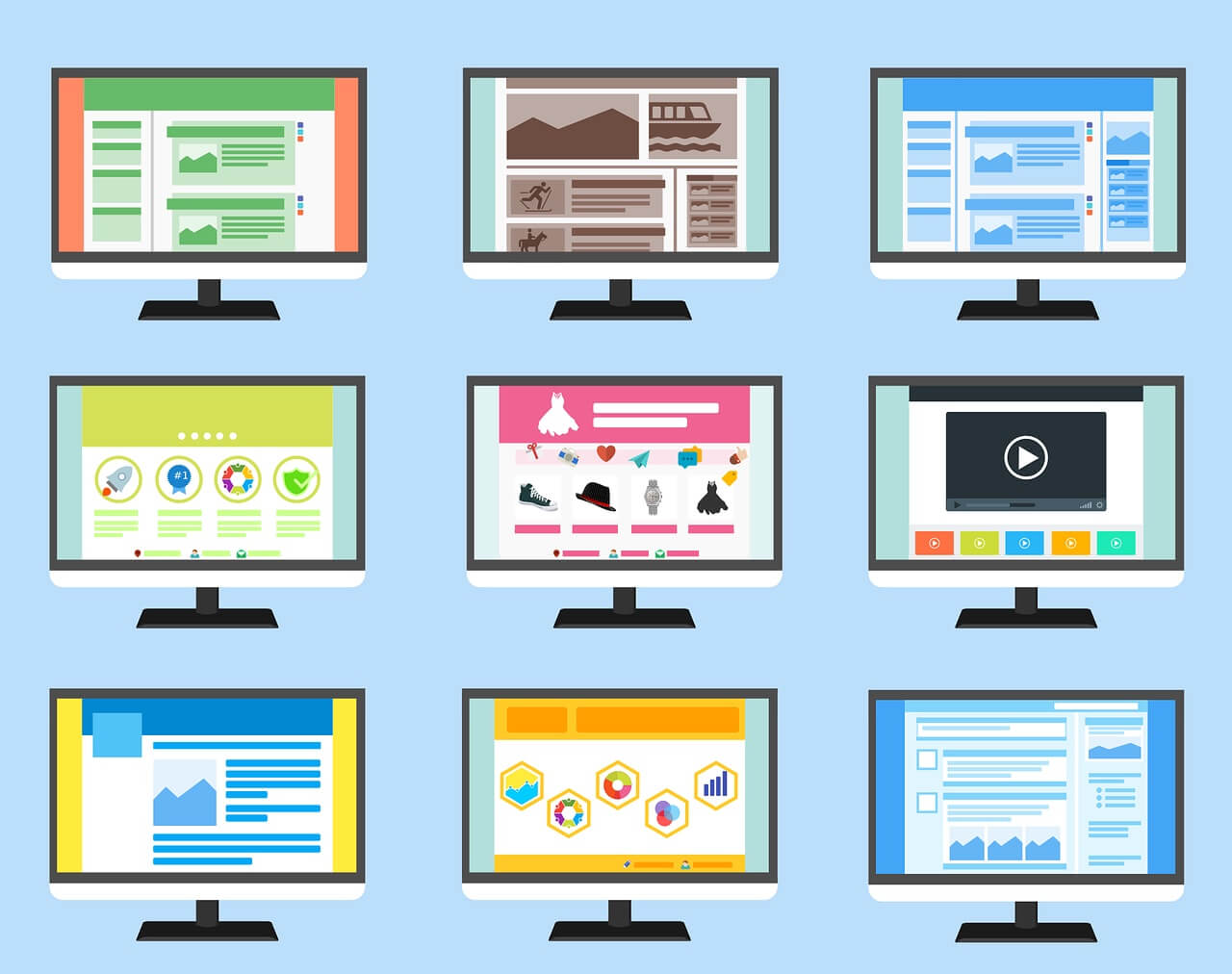What makes a great website?
What makes a website great for your customers?
What makes a website great for your potential customers?
The answers to these questions will help you to publish a successful website. One that encourages current and potential customers to find, see, like and then engage with your content. All of these are precursors to buying your products and services for many customers!
I published a post on this topic many years ago, which included the seven elements that must be on your website. It is called “The 7 essentials of Customer Centric Websites.” and it still makes a useful (and short) read.
One of the major changes since then, is that today, with mobile more likely to be the screen of reference, we have gone from a “no scroll” to a “must-scroll” format. Words have given way to more images and now also to videos. We have gone from information to entertainment, from push to pull, and from “ours” to “theirs.”
Many articles about optimising websites talk too much about technology and usually include company rather than customer priorities. But you, fellow customer centricity champions, know that everything should start with the customer! So I’d like to build on my earlier post to lay out what it takes to win online these days.
9 Essentials of a Great Website
Checking a website is often the first step a customer makes when they are interested in buying a brand or learning about a manufacturer. Therefore we should ensure that ours responds to their needs, whatever the reason for their visit. I have chosen the nine essential elements of a customer centric website below.
Please let me know what you think, by adding a comment below.
1. It’s for the customer, not (just) you
Although your website is about you and your company and/or brands, it is your customers, both current and potential, that need to like it.
Therefore, start by thinking about for whom you are developing the site and what their desires and needs are. Use our 4W™ template to ensure that you go as deep as possible in your understanding of them. I also suggest you read “12 things you need to know about your target customers” for more on what information you need to gather in order to describe them in depth.
2. An intuitive structure
We don’t have time to read, let alone learn how to navigate a website. Customers will leave if they can’t immediately find what they are looking for. This explains why many – dare I say most? – businesses have a 50% plus bounce rate. (See 20+ Average Bounce Rate Benchmarks -2022 update)
It may still be necessary to have a sitemap for those visitors who need help in navigating or are less logical. However, it no longer needs the prominence it once did.
Put it at the bottom of the page in the footer and don’t waste valuable real estate by placing it at the top. If you make it easy for people to find what they are looking for, they will never need to revert to a sitemap, and are even less likely to leave for a competitor’s website.
3. Customers can contact you however they want
Some websites force the visitors to their website to complete a form if they can’t find the information they were searching for.
My recommendation is to do away with impersonal forms and drop-down menus. They usually force customers to use your classification. And even worse, they sometimes don’t even acknowledge that the request has been received!
Instead, make them feel special, valued and appreciated. Make them feel like you are excitedly waiting to hear from them, and that you want to know what they have to share or ask. Acknowledge the request and give them an idea when they can expect a reply.
Customers want to be treated as individuals, not as just one insignificant member of the masses. How do you treat your customers? As the precious clients they are for your business?
A second recommendation is to include contact links or your full details. These should appear on the home page, and include telephone numbers, email, postal and street addresses, and social media accounts.
With the global nature of the internet, a customer has the right to know where you are based. And if you don’t tell them, they may imagine the worst!
4. Full details of your products, brands and services
Today’s customers demand information. In addition to knowing who and where you are, they also want details about ingredients, sourcing, limitations of usage, distribution and availability.
They want reassurance about your practices. Are they sustainable? Is your vision acceptable and your practices ethical? The more information you provide, the less need people will have to contact you with such requests for more information.
One more recent addition to this already long list of information, is company purpose.
There is a lot of debate about whether or not customers care about companies and brands, but the covid pandemic has brought company support to the forefront. The best have been able to demonstrate their purpose through their actions. McKinsey wrote a great article on the topic that I highly recommend. It’s called “Demonstrating corporate purpose in the time of coronavirus.”
5. Details about your company
Anonymous websites are no longer tolerated, as I already mentioned. Customers demand to know with whom they are engaging. So you can no longer hide who you are. But customers need far more than just your contact details.
A detailed “About” section must also be provided, with clear information about all aspects of the company. Topics to include are your management or team structure, operational areas, mission statement, values, strategy, culture, and if you have one, your company societal purpose too. You should also add the latest company news, both for investors and customers.
With the continued rise in the interest of visual content, incorporating a media section can add further interest too. In it, you can provide images and films of your products and advertising. This will ensure that your brands are correctly presented online, as everyone will have access to professional, quality photos and videos.
This visual section has one further advantage. That of making it easy for customers to both comment on and share their favourite ones.
Advertising, in particular, is popular for sharing on social media, so make sure you have the best possible selection of both the latest and historical but popular material available. Adding social share buttons will make it even easier for them.
6. Valuable content
Regularly updated content is good for your SEO rankings as well as for encouraging your customers to return frequently.
Think about the topics of most interest to them. Perhaps you could answer common questions they have through a FAQ section or blog.
Or provide useful recipes, styling tips or other relevant information about product usage that your customers will find appealing. Frequently added new content will have people coming back to visit your site more often.
As mentioned above, visual content is vital today as people read less. If you struggle to create sufficient new content, or just want to get your customers more involved with your brands, then inviting them to provide it is a win-win for both of you.
User-generated content (UGC) as it is called, enables customers to share their real-life experiences with your brands, products and services. You can take advantage of this by offering space for them to add photos, videos and comments. Their stories help convey your brand’s values to other people and build trust.
Purina has been doing this successfully for many years, as owners love to show off their pets. They have even turned user-generated content into advertising. And many other brands have been inspired by what their customers share with them. For an insightful overview of some of the best campaigns, I highly recommend “14 Inspiring User Generated Content Campaigns.”
7. A responsive design
We are all multi-screen users today, moving seamlessly from smartphone to tablet, and from a laptop to TV. We expect the same quality of experience no matter what screen we are using. So a great website needs to be optimised for this.
I am always amazed when I view a website that is not optimised for mobile, Yes they still exist even today! It really does negatively impact the customers’ experience and will certainly damage the brand’s image in the medium term.
A further reason for having a responsive design is that in the last year or so Google has started to penalise those websites that are not optimised. Your potential customers may never learn about you because you won’t appear on the first pages of search results.
8. Engaging content and entertainment
Even if your customers come to your website looking for information, they are often also expecting some form of entertainment. Whether through useful tips and guides, or quizzes, games and competitions, customers demand to be surprised and delighted by the experience you offer them online.
We all love to learn more about ourselves, and the rapid rise of fitness bands and Facebook quizzes are a clear indication of this. Who can resist an invitation to discover “What your favourite colour means” or “What your favourite foods say about you”? or “How male/female is your brain?” Incidentally, the second one was developed by Unilever’s Knorr brand.
I bet you just clicked or plan to click on one of those links, didn’t you?! See how powerful quizzes can be?
And don’t forget our very own C3C Evaluator™ for assessing how customer centric you are.
9. High level of security
Companies record more and more information about their customers than ever before. At least we now have the possibility to define what we are willing to share and what we are not. However, I, like many of you too I’m sure, never bother going into the details of the cookies we are asked to approve.
But in return, we all expect our details to be kept safe. While it remains your responsibility to ensure a secure environment, you can also help, by only asking for the details that you will immediately use for business purposes.
Ask yourself, do you really need telephone numbers if you will never call or text? Do you need postal addresses, occupation or other details that may be possible to collect?
By only requesting the information that you will use, you will reduce the chance of being hacked, due to the lower value of your database. But you also risk losing fewer customers than you would if you require detailed information, especially at the beginning of the relationship before trust has been built. You can always build up your information on your customers over time as they become more comfortable with providing it to you.
Of course, no matter how much information you collect from your customers, you need to protect your database from cyber attacks, whether that risk is high or low.
When I wrote the original post on customer centric websites, I mentioned Reckitt Benckiser as a best-in-class example. Today, when I look at the leading CPG / FMCG websites, I find many others that deserve a mention. I, therefore, decided to ask you, the reader, to vote for your favourite customer centric website and why you consider it to be a great example? Please share your ideas below in the comments.
And if your own website doesn’t pass the above nine essentials test, perhaps it’s time to make some changes? We can help with a detailed website audit which will pinpoint how to optimise it for your customers’ experience.













